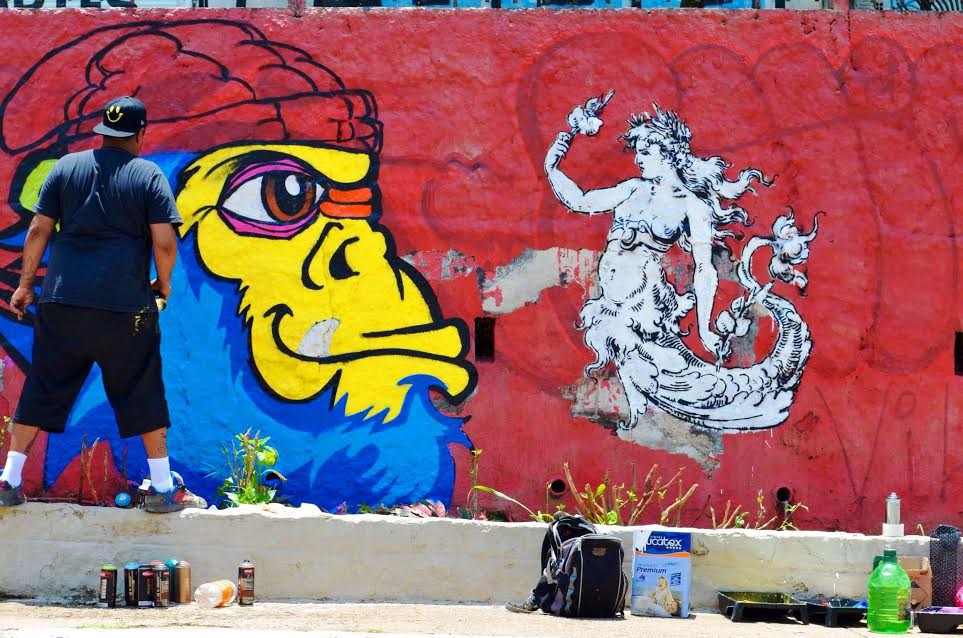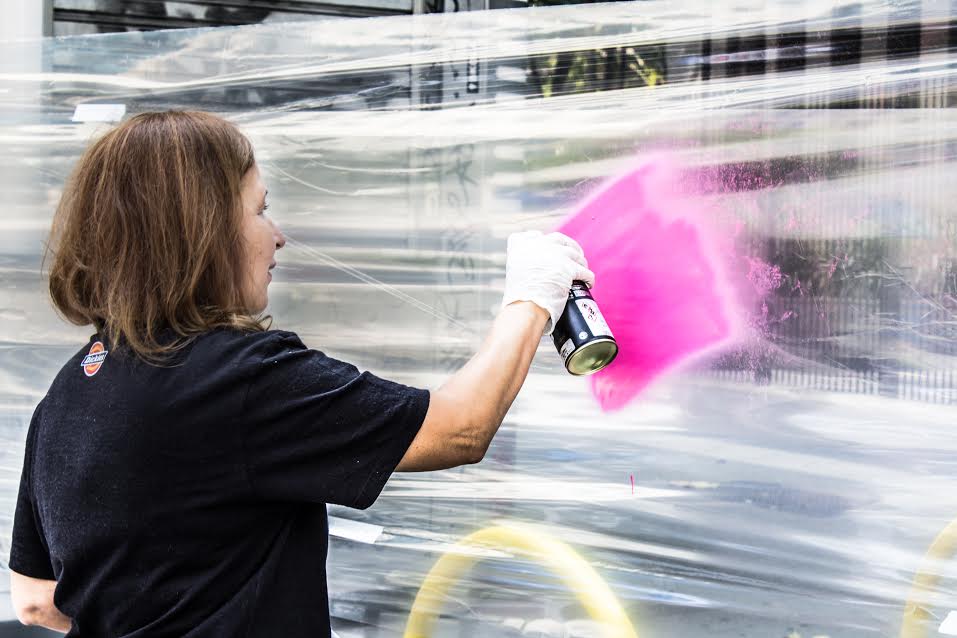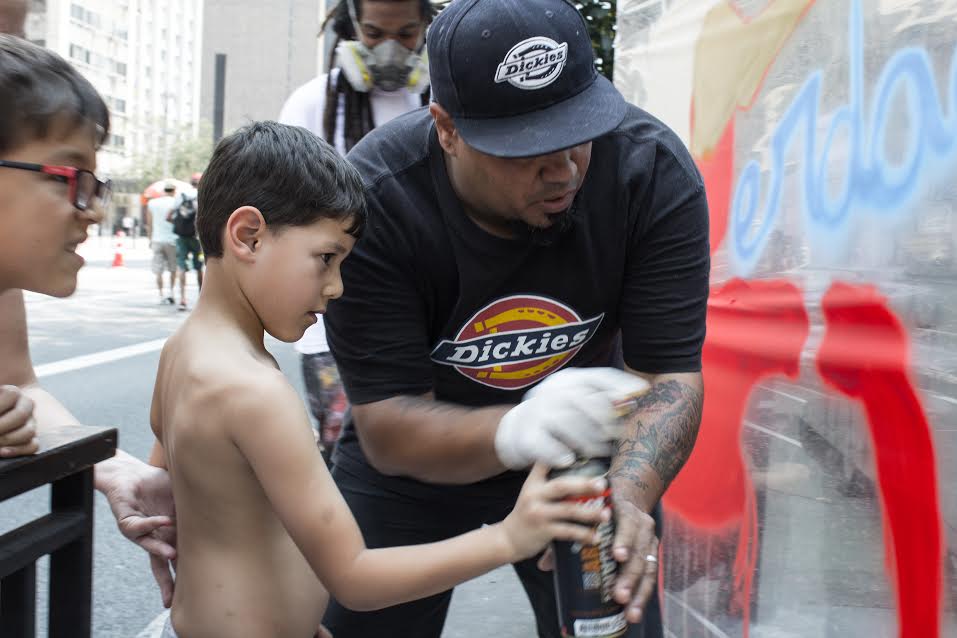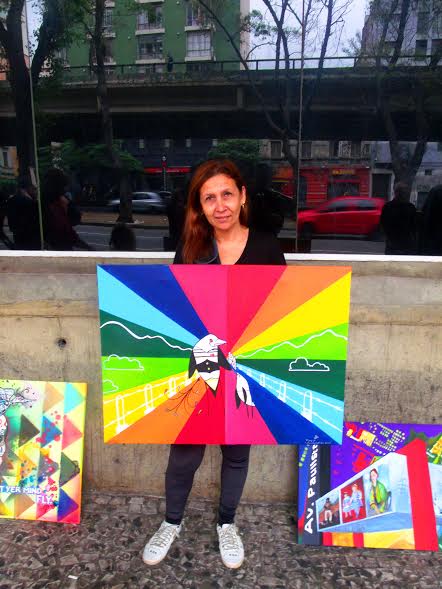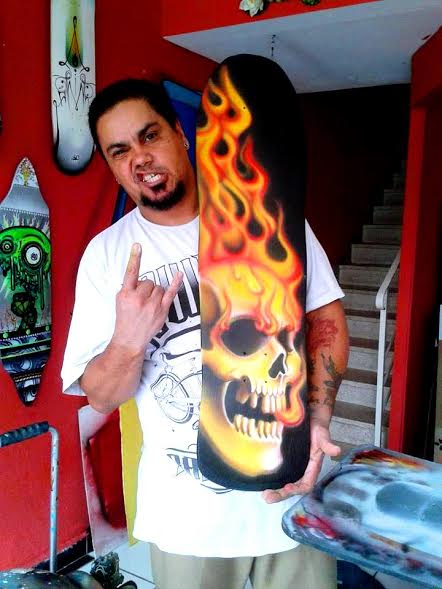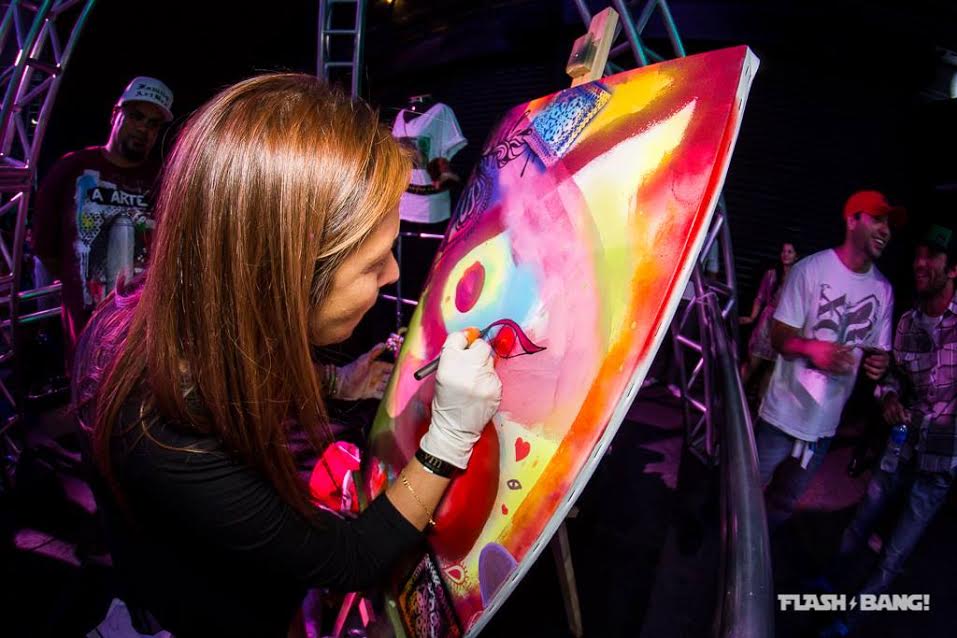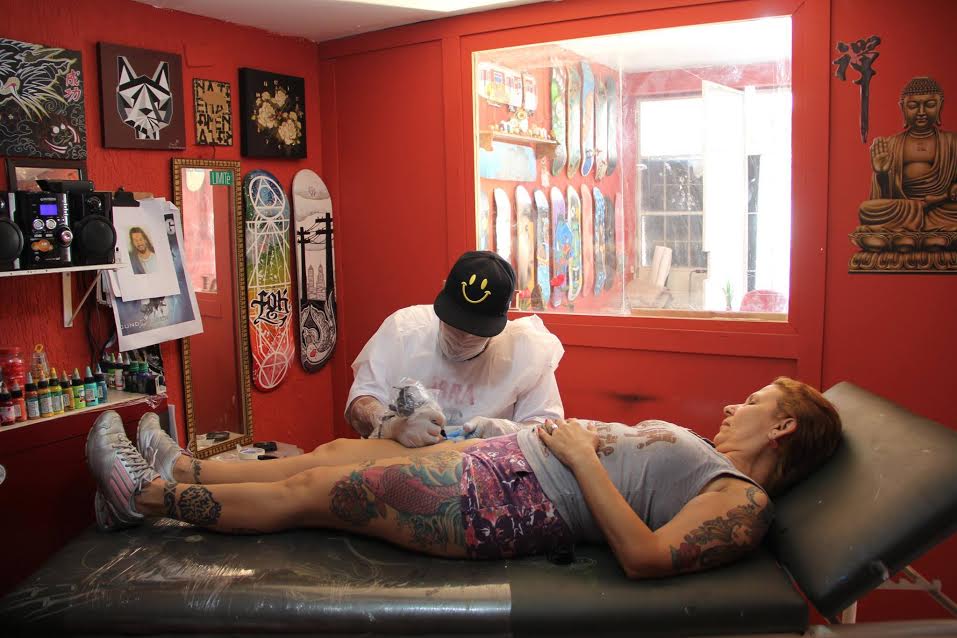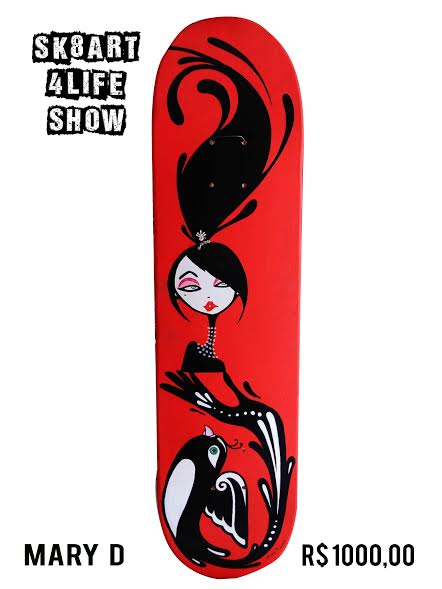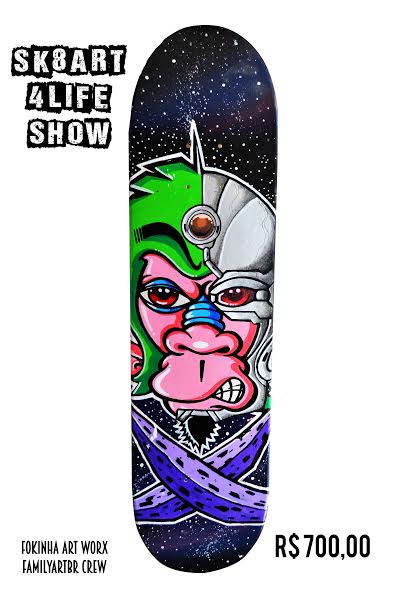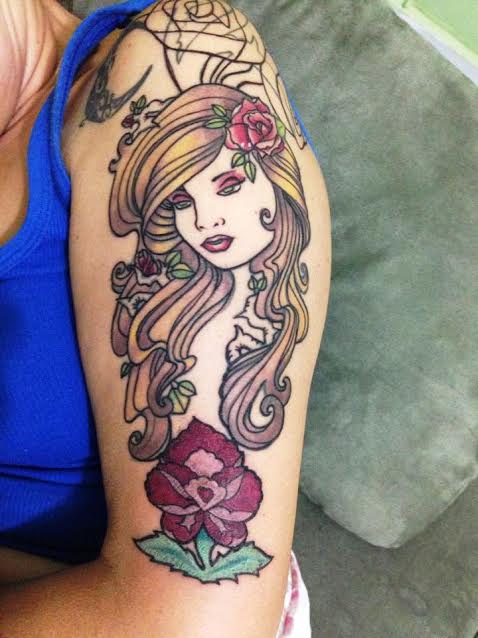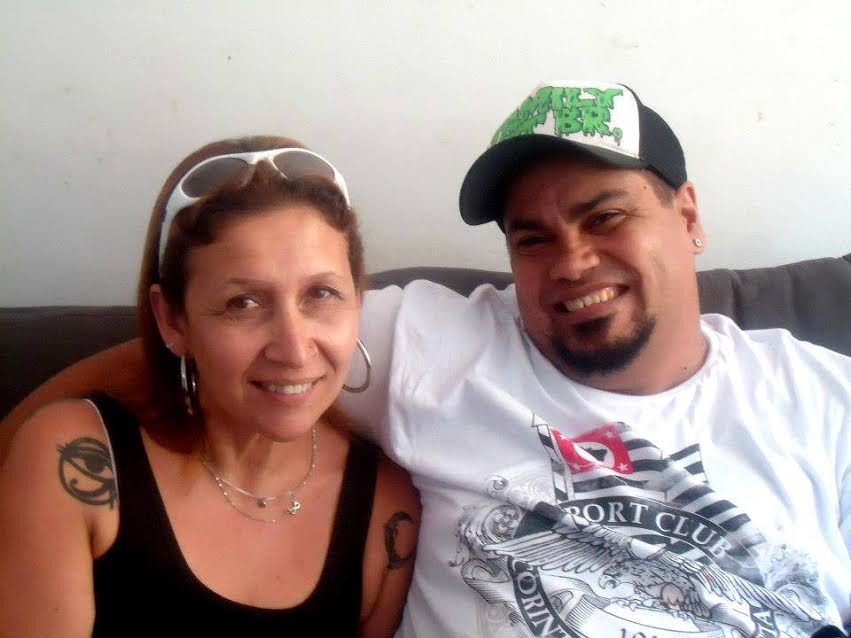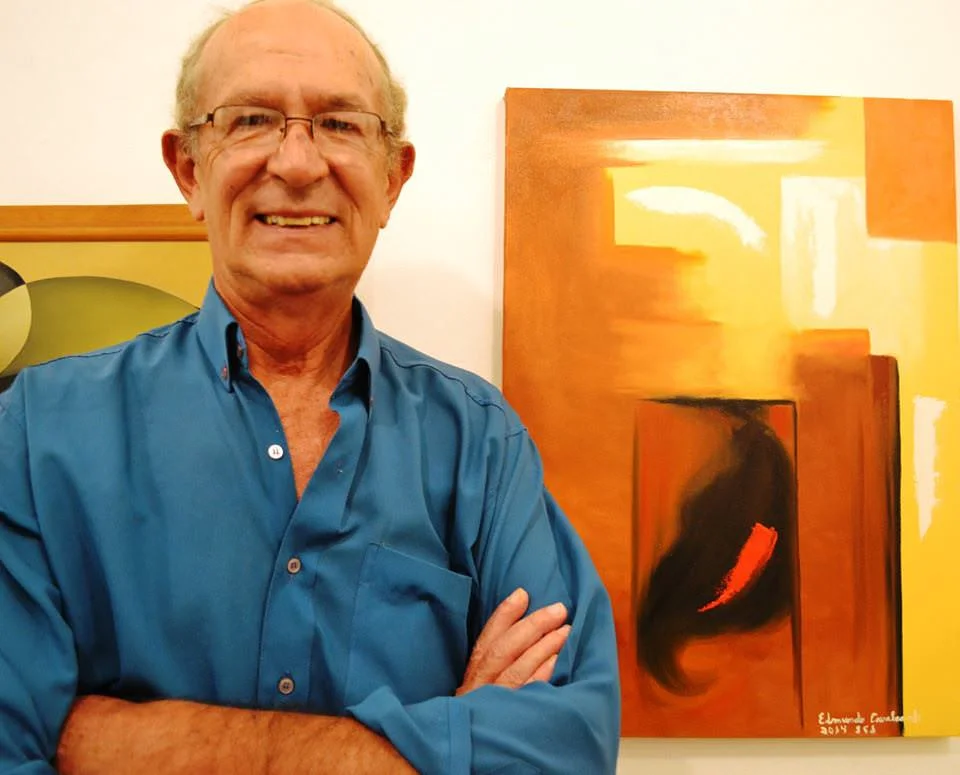
In this regard, we present a new strand of art, the Graffiti (Urban Art), works that embellish the spaces of our cities, with many colors and creativity. Despite some restrictions in some cities. And also the tatoo.
I present to you two graffiti artists and tattooists of first line, Mari and Fokinha, that in addition, make the customization of Skateboards.
Obs.: I met them in an expo of customized Skateboards, in which I participated, in a renowned restaurant in São Paulo.
First dual interview.
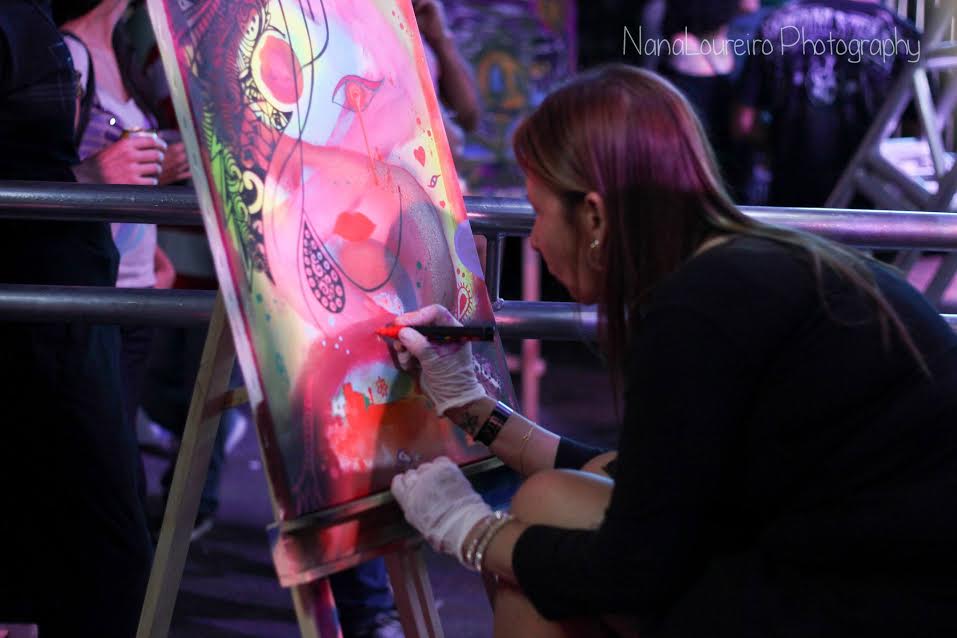
The Graffiti is a street art (Urbana) characterized by designs in public places, (walls, buildings, streets, etc) that arose in the 70, in the United States, in New York City. The term Graffiti, of Italian origin "graffito” (plural ""graphite"”) means "made with coal".
The history of Graffiti in Brazil arose in the 70, precisely in São Paulo, busy time in the history of Brazil, silenced by censorship with the arrival of the military in power.
Parallel to the movement that emerged in New York, the graffiti appears in the brazilian metropolis as a transgressive art, the language of the street, of marginality, that does not excuse yourself and screaming on the walls of the city the annoyances of a generation.
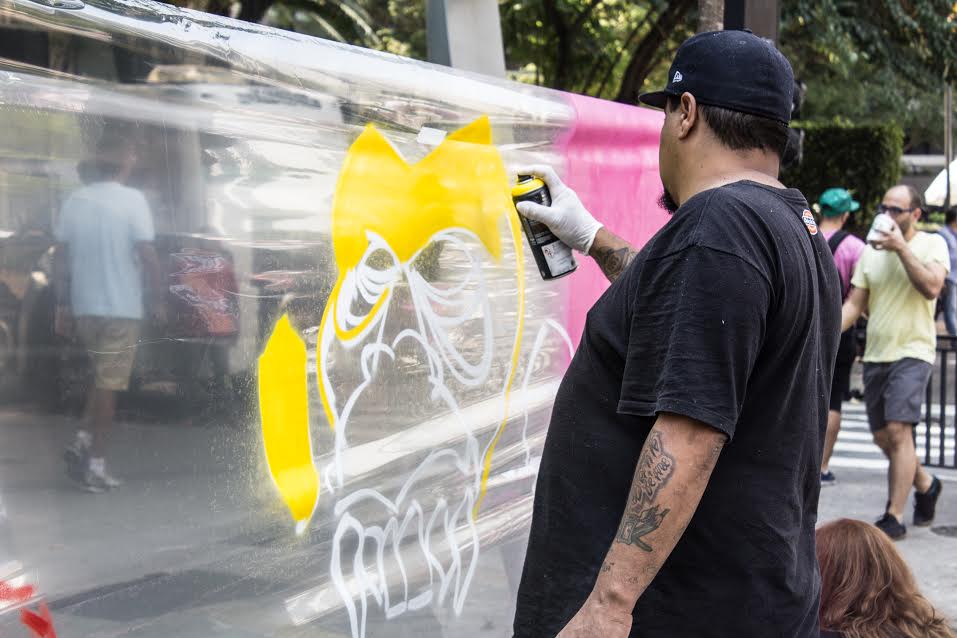
From this, the art of tagging becomes an important vehicle for urban communication, corroborating, over it, the existence of other voices, other historical subjects and active participating of the city.
From this, important to point out that the graffiti, initially, It was an art characterized by anonymous, in the graffiti artist or “writer” turned the city into a major support of artistic communication without delimitation of space, message or Messenger.
Source: TodaMatéria Site.
Interview
Where did you born? And what is your academic training?
Mari: Was born in São Paulo (capital). I have no academic training.
Fokinha: I'm from Sao Paulo, born in the neighborhood of Pari 1975, But coming from São Miguel Paulista. No Academic training in the area.
How and when you give your first contact with the Arts?
Mari: My mother was a schoolteacher,, so at home I always had art material. When I made a small spacecraft on the porch of the House, using playdough, papers, colored pencils and pens…
Fokinha: My first contact was to 3 or 4 years, When my mother and grandmother gave me crayons and pens Silvapen to leave the diarist in peace.
How did you find this gift?
Mari: I think I found, I love colors and mostly leave things more colorful and bright.
Fokinha: I ended up taking a taste for colors and shapes they were coming up and I think there is no gift, but predisposition. Art is like mathematics: the more you train the better.
What are your main influences?
Mari: There are many artists who saw in my childhood, through books, anyway, but, talk of primary influence, I'm sure the women of the world, your clothes, makeup, colors, postures, dances, that influence me a lot…
Fokinha: Maurício de Souza, Salvador Dali, Van Gogh, Da Vinci and many artists of Street Art and Graffiti, as the twins, Banai, Alex Valauri, Scrutinizer, Zezão, especially the CANTWO, What makes a graffiti pulled over to illustration, I also use the style.
What are the materials you use in your work?
Mari: All meeting (kkkk), even my jewelry I use, take it apart to create new things, lap in almost all my screens.
Fokinha: Almost all have around: Pencil, Bic pen, posca, Acrylic, tattoo ink, sprays, Canson, cardboard, card paper, greaseproof paper, Airbrush, etc. Everything is valid to have a pleasant result.
[divider]
[divider]
What is your creative process itself? What inspires you?
Mari: Firstly, put a cool song, romantic preference. So everything is coming in my mind. Just stop when I see you like what I did…
Fokinha: How do I use art as activism and politically, I use my anger as a filter for my works, can't create anything when I'm really happy, because art makes me happy. And when I'm happy by myself, don't feel the need to create art.
When you started effectively to produce or create your works?
Mari: I had 19 years, When I did a painting of plaster, porcelain, fabrics, glasses anyway… but, I started to create more often when I moved in with Marcelo (Fokinha) in 2010.
Fokinha: I started expressing myself professionally in 1991, While living in Vila Caiçara on the South coast of SP. There I started doing Graffiti commercials after a brief career in graffiti, that led me to a ink bath PM (KKKKK) and also I started there the draw for surf brands and sponsorships.
Art is an intellectual production exquisite, where emotions are embedded in the context of creation, but in art history, we see that many artists are derived from other, following technical and artistic movements through time, you own any model or influence of any artist? Who would be?
Mari: Picasso, love working with crazy shapes, kkkk, but, I love the softness of Monet, I don't know create beautiful as his, but, He makes me see the world differently.
Fokinha: I can say that I am directly influenced by street art today. Use the style of illustration, because I was a designer of prints in some brands of clothes, Skate and surf. My most influential artist is Jim Phillips (www.jimphillips.com),This definitely set my current style, because it involved two passions (Surf and skate art), Sports practiced together for 13 years. Skate today.
What does art mean to you? If you were to summarize in a few words the meaning of Arts in your life…
Mari: Everything!!!!
Sign up to receive Event News
and the Universe of Arts first!
Art is living the life of a colorful way or in black and white.
Create is live, to live is to dream, to dream is to be happy and be happy is to create…
Fokinha: My psychological and personal pillar.
What techniques do you use to express their ideas, feelings and perceptions about the world? (Whether it is through painting, sculpture, drawing, collage, photography… or uses several techniques in order to make a mix of different art forms).
Mari: Use various shapes, all are part of a whole.
Fokinha: Drawing Prize, Graffiti, Tattoo, Digital Design.
Every artist has his mentor, that person whom you mirrored that encouraged and inspired you to follow this career you, going ahead and taking your dreams the other expression levels, who this person is and how it introduced you in the art world?
Mari: My grandfather Dr. Abdias Nogueira (my mother's father) and my mommy Ilda.
Fokinha: My mother and maternal grandmother. Though my paternal grandfather was professional lyricist and my father filled with Gothic letters degrees to students in your school.
Do you have other activities besides the graffiti and tattoo? You teach classes, lectures etc.?
Mari: Sometimes taught to children in the neighborhood.
Fokinha: I'm a tattoo artist for 7 years, graffiti artist from 1991, I'm one of the organizers of the Only international Skateboard art in Latin America in Activity (Maybe in the world) and Minister Skate art workshops… and customize external and internal environments also.
Its main works.
Mari: Canvas, Mandalas.
Fokinha: Tattoos.
Your plans for the future.
Mari: Live art and for art.
Fokinha: Live exclusively from art without worrying about demand.
Website: www.familyart.com.br
Facebook:
- FokinhaArtWorx: www.facebook.com/fokinhaartworx
- International Sk8Art4LifeShow: www.facebook.com/Sk8Art4Lifeinternational
- FamilyArt Br Tattoo: www.facebook.com/FamilyArtBrTattoo
- Mary D: www.facebook.com/MaryDFamilyArtBr
- FamilyArt Br Productions: www.facebook.com/FamilyArt-Br-Produções-928057760570452
- My Monkeys: www.facebook.com/mymonkyes
Instagrams:
- @fokinha_art_worx
- @sk8art4lifeshow
- @marydallevedove
- @familyartbrtattoo
- @mymonkeys_
.
….
.
EDMUNDO CAVALCANTI
São Paulo – Brasil
Facebook Profile | Facebook Fan Page
Twitter | Google +
Columnist at Website Obras de Arte
E-mail: cavalcanti.edmundo@gmail.com

